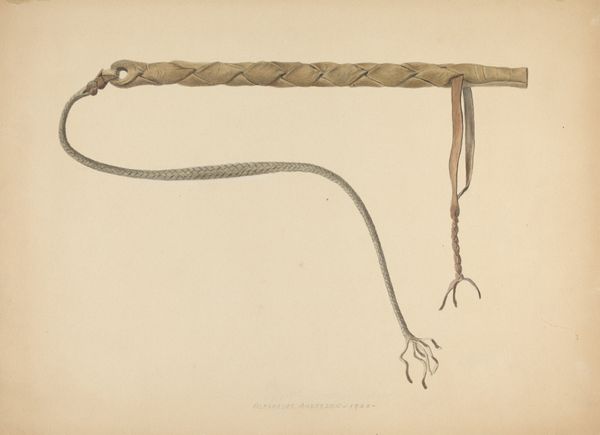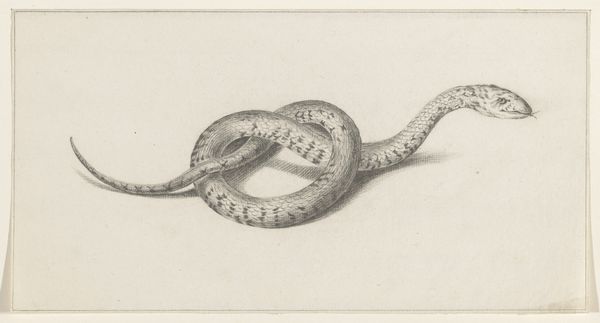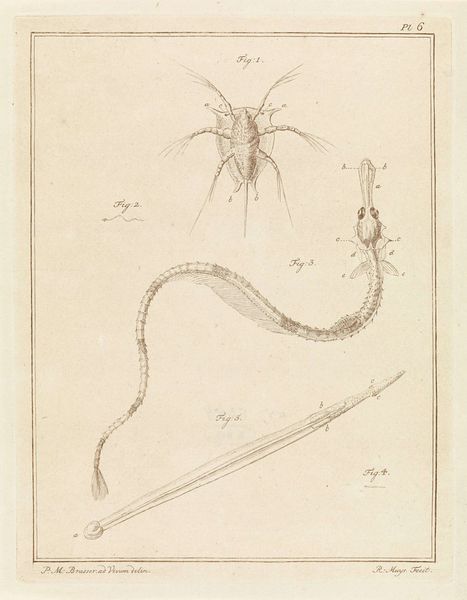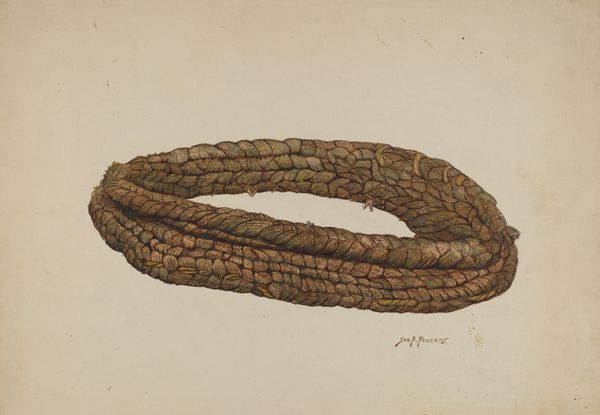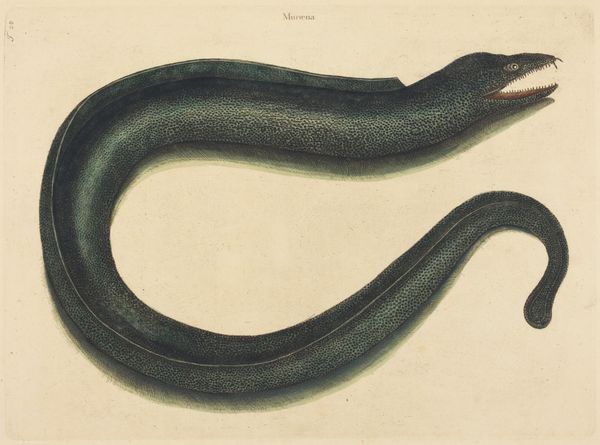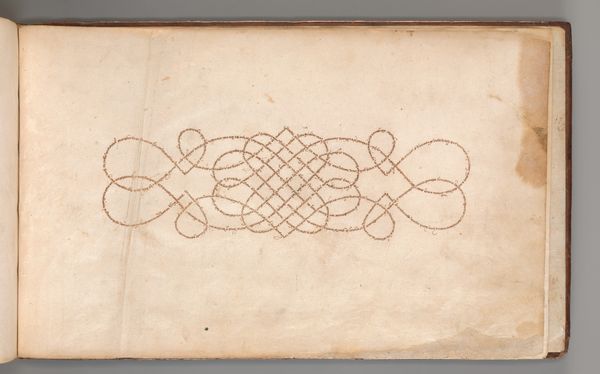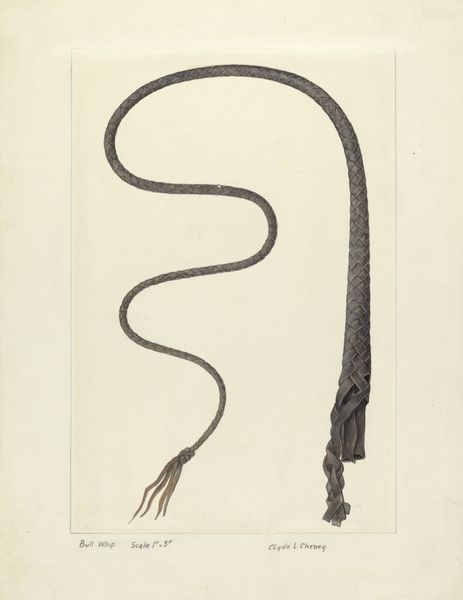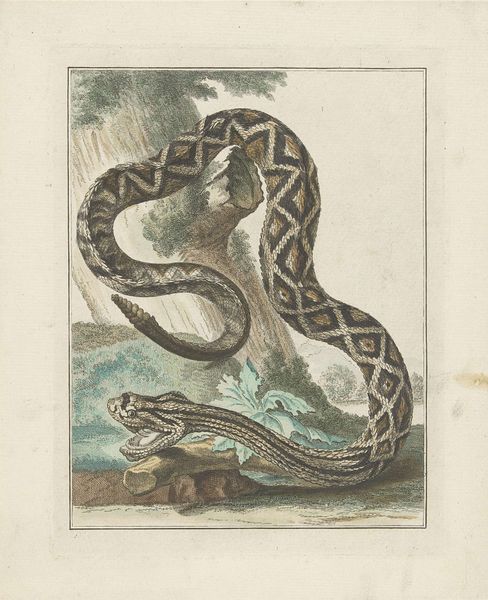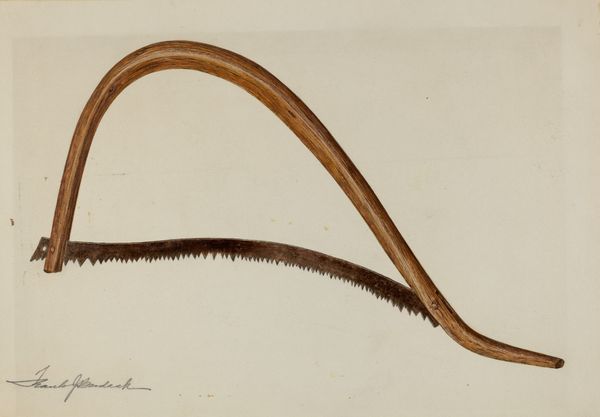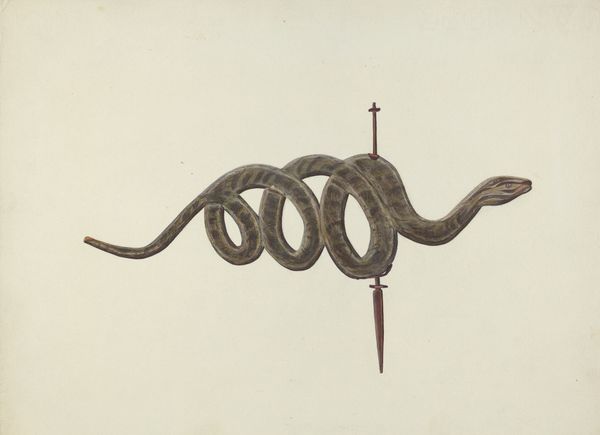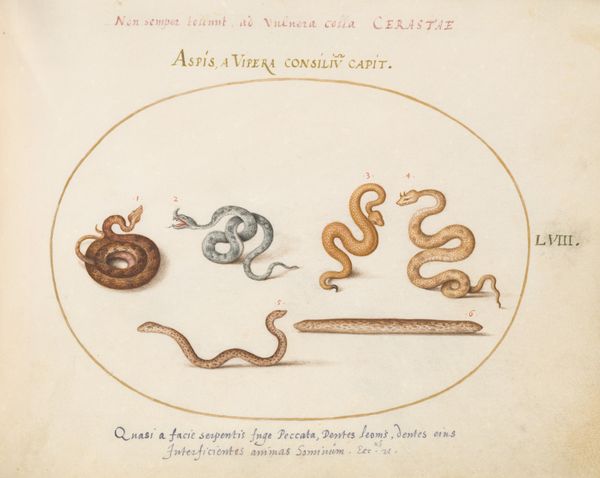
drawing, watercolor
#
portrait
#
african-art
#
drawing
#
old engraving style
#
landscape
#
watercolor
#
coloured pencil
#
watercolour illustration
#
naturalism
#
realism
Dimensions: height 660 mm, width 480 mm, height 172 mm, width 301 mm, height mm, width mm
Copyright: Rijks Museum: Open Domain
Curator: Robert Jacob Gordon likely created this watercolor and colored pencil drawing, Bitis cornuta, sometime between 1777 and 1786. The drawing depicts a Hornsman adder with an accompanying anatomical cross-section of its head. What’s your initial reaction to the piece? Editor: Well, visually, I'm immediately struck by the starkness of the image, the sort of cold, scientific gaze combined with what seems like inherent symbolism in the snake form itself, perhaps the cycle of life and death in a place far removed from the drawing’s likely origins. Curator: Absolutely. It is tempting to consider the intersections of colonial power and scientific observation. Gordon, a Dutch military officer, was charting territory, and this drawing naturalizes that agenda by taking possession of nature itself. Do you see the snake representing a particular element of danger or perhaps something more specific given its natural habitat? Editor: For me, the symbolic meaning resonates most strongly. Serpents often embody duality—healing and poison, creation and destruction. Here, the adder’s form, captured so precisely in the drawing, is reminiscent of the ouroboros, an ancient emblem for the eternal return and the self-devouring nature of existence, hinting at a broader cultural understanding beyond just a scientific cataloging. Curator: I think that’s astute. And if we consider the cultural narratives being written about Southern Africa at this time, then that symbolism speaks to a perspective infused with a particular social power. Even something as elemental as an image can be situated within complex histories of colonial exploitation and extraction. It certainly gives the otherwise unremarkable piece a heavy social weight. Editor: It’s in the visual echo – the historical residue embedded within what might first appear to be objective scientific documentation – where we discover that broader resonance. It calls attention to our role in observing, interpreting, and contextualizing, too. What a striking illustration of those power dynamics. Curator: Indeed, offering a unique lens on nature and empire. Editor: Definitely a compelling synthesis of cultural meanings and observations from long ago.
Comments
No comments
Be the first to comment and join the conversation on the ultimate creative platform.


